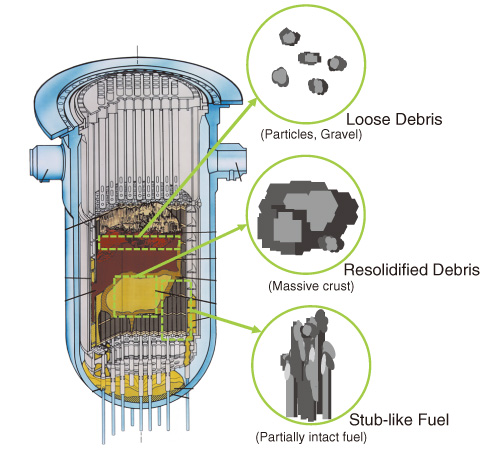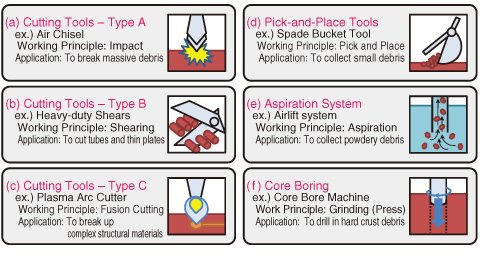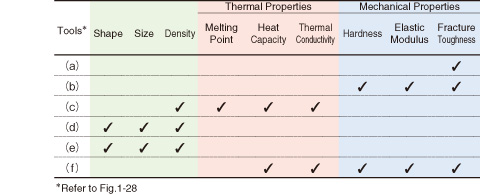
Fig.1-27 Image of fuel debris from TMI-2 accident
Fuel debris from the TMI-2 accident had various features depending on the location.

Fig.1-28 Categories of defueling tools
Table 1-2 Properties of fuel debris for defueling

For decommissioning of the TEPCO’s Fukushima Daiichi NPS (1F), removal of the fuel debris, which is a mixture of molten fuel and structural materials, is planned to start around 2020. It is necessary to clarify the characteristics of the fuel debris in order to design and develop the defueling process and tools.
First, we surveyed the defueling process in the Three Mile Island Unit 2 accident (hereafter, TMI-2). Several types of debris existed in the reactor, such as loose debris (particles, gravel), resolidified molten debris (massive crust), and stub-like fuel (partially melted fuel) (Fig.1-27). Various defueling tools were selected according to the features of the fuel debris.
In the 1F accident, the relocation and components of the debris were estimated to differ from those in TMI-2, e.g., molten core and concrete interaction on the pedestal floor. However, some types of defueling tools used in TMI-2 can be applied to 1F defueling because the debris in 1F and TMI-2 is assumed to have similar characteristics.
The useful tools in TMI-2 defueling were categorized into six groups according to their operating principles, such as impact and shearing (Fig.1-28). The important properties of the fuel debris for defueling were selected considering their effect on the tools’ performance (Table 1-2). Of these properties, the mechanical properties (hardness, elastic modulus, fracture toughness) must be identified as preferential items, because few data on these characteristics of fuel debris are available in past severe accident studies.
We have to use some techniques without large samples to measure these mechanical properties because we can obtain only very small actual debris samples early in the sampling operation. The hardness is measured by the indentation method as the Vickers hardness. The elastic modulus can be measured by the ultrasonic wave pulse echo method, and the fracture toughness is also measured by the indentation fracture method.
We will suggest some types of non-radioactive surrogate debris materials for the development of defueling tools on the basis of these properties.